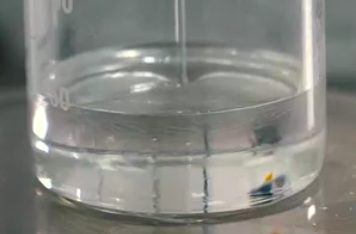| "Descrizione" by Whiz35 (11840 pt) | 2023-Jul-06 10:53 |
Review Consensus: 10 Rating: 10 Number of users: 1
| Evaluation | N. Experts | Evaluation | N. Experts |
|---|---|---|---|
| 1 | 6 | ||
| 2 | 7 | ||
| 3 | 8 | ||
| 4 | 9 | ||
| 5 | 10 |
Starch Hydroxypropyltrimonium Chloride is the quaternary ammonium compound formed by the reaction of starch with 2,3-epoxypropyltrimethylammonium chloride, a non-GMO, naturally derived, non-ethoxylated cationic starch polymer with a low viscosity. Derived from food-grade potato starch, it contains no GMOs, phthalates, dioxin, BSE-related materials, CMR (carcinogenic, mutagenic or reproductive toxicity) substances.
The name defines the structure of the molecule:
- Starch is the basic molecule that is modified. Starch is a polysaccharide, which means that it is a large molecule composed of many sugar units.
- Hydroxypropyl. This indicates that a hydroxypropyl group (-CH2CH(OH)CH3) has been added to the starch molecule through a process called etherification, which involves replacing a hydrogen atom of the hydroxyl (-OH) group in the starch molecule with the hydroxypropyl group.
- Trimonium Chloride indicates that the starch molecule has been modified by adding a trimonium chloride group. The "trimonium" part means that there are three methyl groups (-CH3) attached to a nitrogen atom, and the "chloride" part indicates that there is a chloride ion associated with the molecule, giving it a positive charge. This makes the molecule a type of quaternary ammonium compound often used for their antimicrobial properties.
The synthesis process takes place in several stages:
- Extraction of starch from vegetable sources such as corn, potatoes or wheat with starch separation from the rest of the plant material, usually through a grinding and washing process.
- Modification of starch chemically to introduce hydroxypropyl groups through a reaction with propylene oxide.
- Quaternization. Reaction with a quaternary ammonium compound, such as trimethylammonium chloride, to introduce the quaternary ammonium group into an aqueous solution and may require the use of a catalyst.
- Purification. Starch Hydroxypropyltrimonium Chloride is typically purified with a filtration and drying treatment.
It appears in the form of a viscous gel.

What it is used for and where
Cosmetics
Used in hair care as a conditioning agent to make hair smooth and increase its volume with a soft foaming effect. Also suitable on the skin. Used in shampoos, conditioners and hair lotions, skin care products, liquid soaps, creams, lotions and cleansers for the face and body. Compared to Poliquaternium 7 or Poliquaternium 10 it shows a softer effect on both hair and skin.
Antistatic agent. Static electricity build-up has a direct influence on products and causes electrostatic adsorption. The antistatic ingredient reduces static build-up and surface resistivity on the surface of the skin and hair.
Emulsion stabilizer. Emulsions are thermodynamically unstable. Emulsion stabilisers improve the formation and stability of single and double emulsions. It should be noted that in the structure-function relationship, molar mass plays an important role.
Hair conditioning agent. A significant number of ingredients with specific and targeted purposes may co-exist in hair shampoo formulations: cleansers, conditioners, thickeners, matting agents, sequestering agents, fragrances, preservatives, special additives. However, the indispensable ingredients are the cleansers and conditioners as they are necessary and sufficient for hair cleansing and manageability. The others act as commercial and non-essential auxiliaries such as: appearance, fragrance, colouring, etc. Hair conditioning agents have the task of increasing shine, manageability and volume, and reducing static electricity, especially after treatments such as colouring, ironing, waving, drying and brushing. They are, in practice, dispersants that may contain cationic surfactants, thickeners, emollients, polymers. The typology of hair conditioning agents includes: intensive conditioners, instant conditioners, thickening conditioners, drying conditioners. They can perform their task generally accompanied by other different ingredients.
Viscosity control agent. It controls and adapts viscosity to the required level for optimal chemical and physical stability of the product and dosage in gels, suspensions, emulsions, solutions.
Dosage:
| Shower gel | 0,1%-0,4% |
| Shampoo for fine hair | 0,3%-,5% |
| Shampoo for porous hair | 0,2%-0,5$ |
Typical characteristics of a commercial hair shampoo product:
| Appearance | Viscous gel |
| pH | 5.2 ~ 5.4 |
| Viscosity | 3.000 ~ 6.000 mPas |
| Stability | Stable for 3 months at 4°C, 20°C, 40°C |
| Toxicology | Non irritating, not sensitizing |
| Storage | 24 months |
The most relevant studies on this ingredient have been selected with a summary of their contents:
Starch Hydroxypropyltrimonium Chloride studies

CAS 56780-58-6
Synonyms:
- Starch, 2-hydroxy-3-(trimethylammonio)propyl ether, chloride
- (3-Chloro-2-hydroxypropyl)trimethylammoniumchloridemodifiedstarch
- Starch,N,N,N-trimethyl-2-hydroxypropanaminiumchlorideether
| Evaluate |

